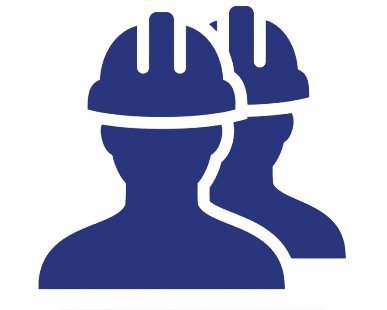What Kind of Raw Materials does Tabarestan Plastic Complex Use to Produce its Products?
The raw materials used to produce the products (goods) are mainly sanitary grade polyethylene. Linear polyethylene with medium or heavy density has a good strength and impact resistance among polymers. In addition, it has a high resistance against a wide range of chemical products. For special uses, Tabarestan Plastic Complex produces its tanks using reticulated polyethylene. These materials have extremely high impact resistance, are very resistant to tensions caused by environmental conditions, and therefore, they are used to store a wider range of chemical products. At the same time, they have a higher usage temperature than polyethylene
Which Method are the Products Produced by?
All the production tanks of the company are produced in an integrated manner using the state-of-the-art machinery using the rotational molding method. Please refer to the shaping technology section of the website for more information on this issue.
What are the Advantages and Limitations of the Rotational Molding Industry?
One of the most important advantages of this industry is in the field of design. It is possible to produce a part, which must be produced by production and assembling several parts using other processes, in one-piece and at a much lower cost with a suitable design. The products produced using this process inherently have properties such as the homogeneity of the wall thickness and the high strength of the corners. In addition, some grooves can be used in the product design in order to increase the strength.
Another important advantage of this industry is the possibility of adding some parts such as metal threads, pipes and structures, and even plastic parts with a different color from the product to the mold before the production process begins. These parts will form the main components and bill of material (BOM) of the product at the end of the production process.
Other advantages of this industry include:
Using a pre-made (developed prototype) mold for laboratory applications
Production of products with very little spoil
Producing complex shapes at minimal cost
Production of double-walled (double-glazed) and multi-layer parts
Simultaneous use of several molds during the production process
Easy opening and closing of molds
Production of high-quality parts
Production of integrated plastic parts without welding line
Production of plastic parts with high impact and strength capability and resistant to corrosion
Adjustment of the thickness of different parts of the product
Production of parts with completely-homogeneous thickness
Production of various products from 500 grams to 500 kilograms
Production of molds in a very short time
In addition to the mentioned advantages, this technology also has limitations:
One of the limitations of this technology due to conducting the molding at a low pressure is the impossibility of producing the parts with large smooth surfaces. These surfaces will change shape (deform) after the end of the production process.
Another limitation is the impossibility of production with sharp components (such as sharp threads). These components can be easily produced by an industry such as injection molding.
On the other hand, the production process of this industry is long and time-consuming compared to many other plastic industries, and the entire mold must be cooled in order to take the product out of the mold. These factors cause an increase in environmental and financial costs.
How was the Molding Industry Formed in Iran?
The first rotational molding company was established in Iran in 1974. The machinery purchased from a Norwegian company were put into operation with a capacity of about 300 tons per year in 1977. Plastic tubs and tanks were mainly produced in this company. The first rotational molding machine with electric heating system was developed by the current CEO of Tabarstan Plastic Complex, Mr. Mohammad Ali Golestani, in Iran in 1992. He designed the first rotational molding machine with fossil fuel in 1994. This event became the beginning of a great transformation in this industry and gave a great acceleration to its development in Iran due to the cheapness and abundance of fossil fuel in Iran. Hence, he is called as the father of Iran's rotomolding industry due to his continuous and effective presence in the growth and development of the industry in Iran for more than 25 years. The first production line of Tabarestan Plastic Complex was launched in 1998. A highly-sophisticated rotational molding machine was imported into Iran from a world-renowned company by Tabarestan Plastic Complex in 2006. The first rotational molding machine with automatic control system and movable furnace was designed and developed by the technical staff of Tabarestan Plastic Complex and was registered as the first invention in the field of manufacturing the rotational molding machinery in Iran in 2009. Networked polyethylene was placed in the production line for the first time in Iran in Tabarestan Plastic Complex in 2010 and was registered as the first invention in the field of production of rotational molding products in Iran.
How was the Molding Industry Developed in the world?
The rotational molding process or rotomolding in short is one of the processes of shaping plastic materials in the form of hollow hollows. This industry dates back to about 150 years ago (1855). This process was first used to mold semi-liquid metallic materials using a simple type of machinery. The first polymer used in this industry (like many other plastic (materials) shaping technologies) was polyvinyl chloride. This happened in the 1930s. This industry was revolutionized after the World War II and in the late 1950s, with two important events, the production of polyethylene powder and its use instead of liquid resins and the development of hot air circulation furnaces. Linear light polyethylene entered the production cycle in the mid-1970s. Polyamide, polypropylene (PP), and polycarbonate entered the production cycle in the 1980s. Since polyethylene exhibited very diverse properties, it soon surpassed other polymers in terms of the extent of usage so that nowadays, more than 80% of the products produced using the rotational molding method are produced from the raw material of polyethylene. We can mention tanks to store water, fuel, and chemical products, tubs used in electroplating and fish breeding industries, toys, packaging barrels, floating docks, and traffic and road equipment, etc. from this category of products.
Is it possible to Produce Customized Products?
The Research & Development Department of Tabarestan Plastic Complex announces its readiness to consult and manufacture any customized products in the field of polyethylene products in the dimensions requested by customers.


 فارسی
فارسی English
English عربي
عربي کوردی
کوردی
User comments